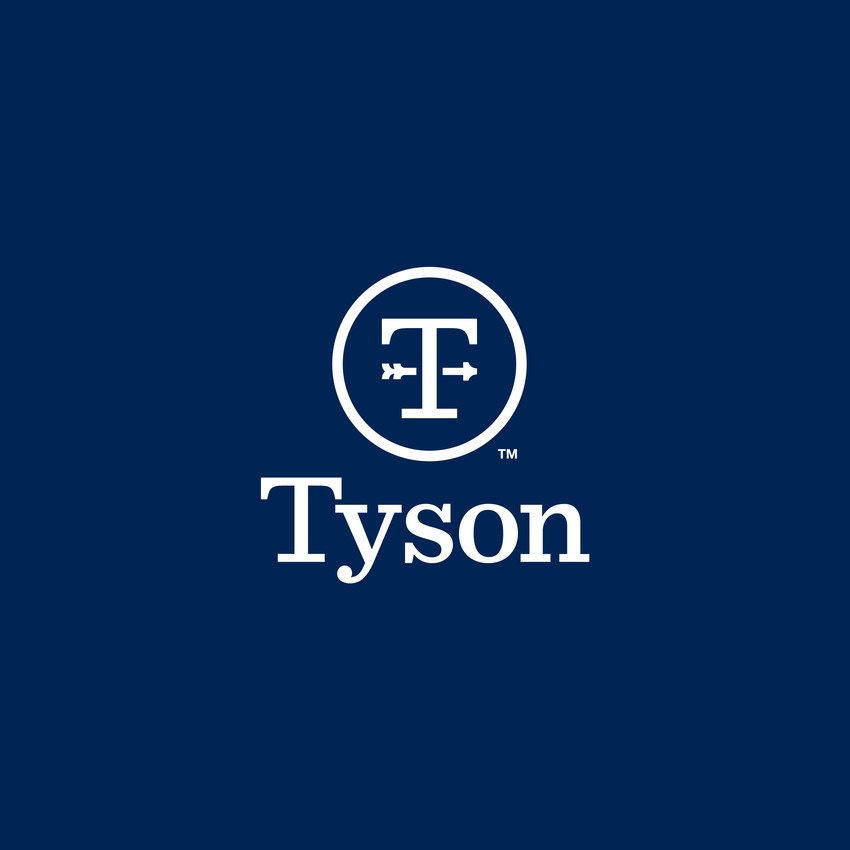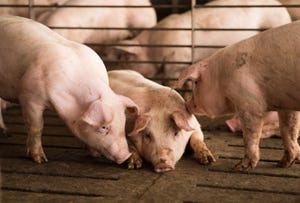Tyson Foods reports strong first quarter 2022 results
Company is targeting $1 billion in productivity savings by the end of fiscal 2024 and $300 million to $400 million in fiscal 2022.
February 7, 2022

Tyson Foods, Inc. cites strong consumer demand for the company's first quarter performance results. First quarter highlights include a GAAP EPS of $3.07, up 140% from the prior year and an adjusted EPS of $2.87, a 48% rise from the prior year. The company's GAAP operating income of $1,455 million, increased 106% and the adjusted operating income of $1,432 million, was up 40% from the prior year.
"We're pleased with the results of the first quarter and of the steps that we are taking to improve productivity," says Donnie King, president and CEO of Tyson Foods. "Our performance reflects the resilience of our multi-protein portfolio even with continued volatility in the marketplace. We remain committed to winning with our team members, winning with our customers and consumers and winning with excellence. We have the right team who are taking the right actions and as a result, we believe our future is bright."
Summary of segment results
Beef
Sales volume decreased due to the impacts associated with a challenging labor environment and increased supply chain constraints, partially offset by strong global demand. Average sales price increased as input costs such as live cattle, labor, freight and transportation costs increased and demand for Tyson beef products remained strong. Operating income increased due to strong demand as the company continued to optimize revenues relative to live cattle supply and a reduction in direct incremental expenses related to COVID-19, partially offset by production inefficiencies due to the impacts associated with a challenging labor environment. Additionally, operating income in fiscal 2021 was impacted by a $55 million gain from the recovery of cattle inventory related to a cattle supplier's misappropriation of company funds.
Pork
Sales volume was up slightly as strong global demand was offset by the impacts associated with a challenging labor environment. Average sales price increased as input costs such as live hogs, labor, freight and transportation costs increased and demand for pork products remained strong, partially offset by unfavorable mix associated with labor shortages. Operating income increased due to strong demand as the company optimized revenues relative to live hog supply and a reduction in direct incremental expenses related to COVID-19, partially offset by the impacts associated with a challenging labor environment.
Chicken
Sales volume increased primarily due to increased live production and a strong demand environment. Average sales price increased due to the effects of an inflationary cost environment. Operating income increased due to increased sales volume and higher average sales prices, partially offset by the impacts of inflationary market conditions including $185 million of higher feed ingredient costs, increased supply chain costs and a challenging labor environment. Additionally, operating income in the first quarter of fiscal 2022 was impacted by $23 million of insurance proceeds, net of costs incurred related to a fire at a production facility and was impacted in the first quarter of fiscal 2021 by a $320 million loss from the recognition of a legal contingency accrual.
Prepared foods
Sales volume decreased due to the divestiture of our pet treats business in the fourth quarter of fiscal 2021 as well as lower production throughput primarily associated with a challenging labor and supply environment. Average sales price increased primarily due to the effects of revenue management in an inflationary cost environment. Operating income decreased due to the impacts of inflationary market conditions, including $215 million of increased raw materials and other input costs, increased supply chain costs and a challenging labor environment, partially offset by favorable pricing.
Outlook
For fiscal 2022, the USDA indicates domestic protein production (beef, pork, chicken and turkey) should be relatively flat as compared to fiscal 2021 levels. The following is a summary of the outlook for each of Tyson's segments, as well as an outlook for revenues, capital expenditures, net interest expense, liquidity and tax rate for fiscal 2022.
Beginning in fiscal 2022, Tyson launched a new productivity program, which is designed to drive a better, faster and more agile organization that is supported by a culture of continuous improvement and faster decision making. The company is targeting $1 billion in productivity savings by the end of fiscal 2024 and $300 million to $400 million in fiscal 2022, relative to a fiscal 2021 cost baseline. The firm says they are currently on track to achieve the planned productivity savings for fiscal 2022.
Beef
USDA projects domestic production will decrease approximately 1% in fiscal 2022 as compared to fiscal 2021. Tyson anticipates another strong year with adjusted operating margin at the upper end of 9% to 11% in fiscal 2022. The coompany expects the first half of the fiscal year will be stronger than the second half as a combination of higher utilization and demand for cattle may result in a narrowing spread.
Pork
USDA projects domestic production will decrease approximately 2% in fiscal 2022 as compared to fiscal 2021. Tyson has their pork segment's adjusted operating margin set to be 5% to 7% in fiscal 2022.
Chicken
USDA projects chicken production will increase approximately 2% in fiscal 2022 as compared to fiscal 2021. Tyson anticipates an adjusted operating margin of 5% to 7% for fiscal 2022 as the adjusted operating margin is expected to achieve this on a run rate basis by the middle of the year resulting in overall stronger performance in the second half of the fiscal year.
Prepared Foods
The company foresees the adjusted operating margin will be at the upper end of 7% to 9% in fiscal 2022 and aims to remain disciplined in pricing initiatives to ensure that additional inflationary pressures are mitigated by sales price increases, while also working diligently to deliver productivity savings to reduce costs.
Source: Tyson Foods, which is solely responsible for the information provided, and wholly owns the information. Informa Business Media and all its subsidiaries are not responsible for any of the content contained in this information asset. The opinions of this writer are not necessarily those of Farm Progress/Informa.
You May Also Like



